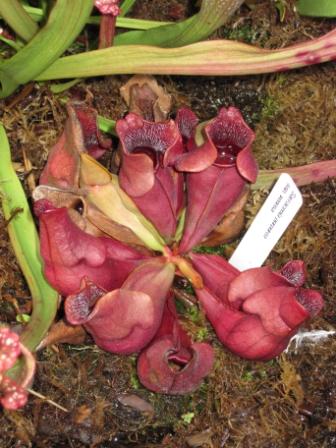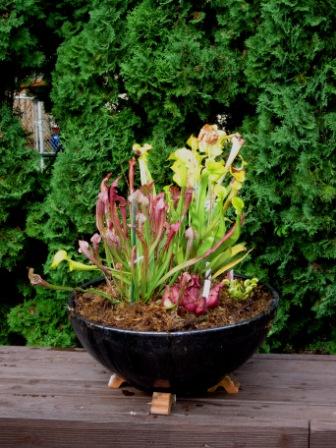A few brave souls dared to take on Friday’s puzzle. Here’s a more revealing photo; the "tongue" is actually the top of a pitcher plant:

Kudos to Hap for correctly identifying the genus (Sarracenia) of this carnivorous plant. This particular one is S. purpurea, which is distinctive in that it has dark red, open pitchers rather than hooded ones. You can easily see the downward slanting hairs in the throat of the pitchers. These hairs, as Diana pointed out, keep trapped insects from climbing back out of the pitcher.
This pitcher plant is part of my nifty bog garden that we put together this year. If any of them get big enough, I’ll have to try Hap’s unorthodox method of slug disposal.

That’s so cool. Do you treat it as an annual? Do you bring them inside for the winter or overwinter in some other way? How could I copy in the mid-Atlantic area?
These species are relatively cold hardy, though hard freezes will take them back to the ground. But many of them need a cold period to do well anyway. We’re planning on leaving them outside this winter (we’re USDA zone 8). We’ll see how they look next spring!
For anon: Sarracenia purpurea
We have a local nursery (Spring Haven Nursery) who is a wholesale supplier. Contact info at the link.
Thanks!